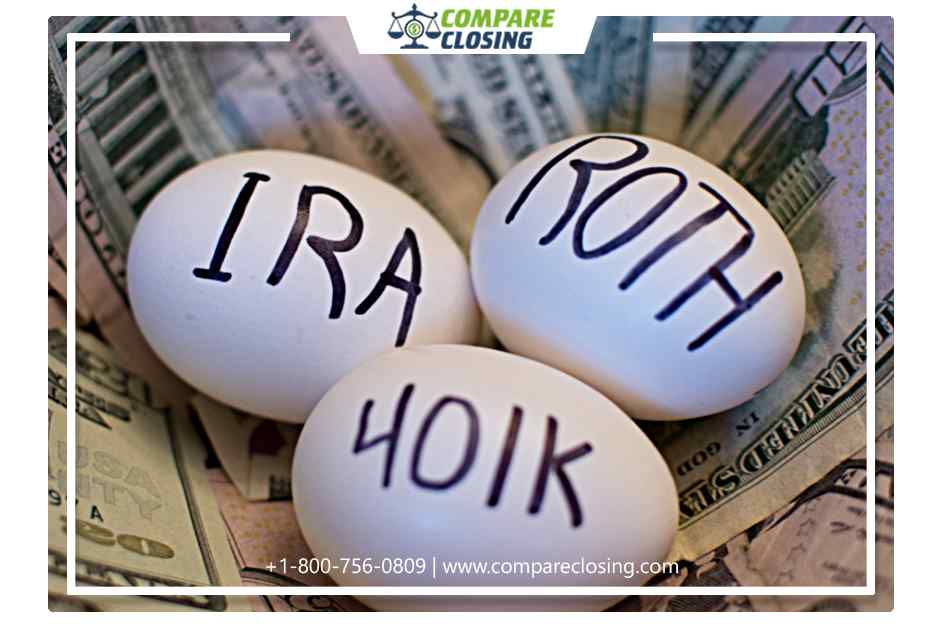Table of Contents
- What Are Netting Escrows & How Does It Work?: The Best Guide - January 2, 2024
- The Secret About Prescriptive Easement: Top Guide 1 Must Know - December 4, 2023
- About Home Equity Loans In Texas And How Can One Obtain It - November 27, 2023
What is a Designated Roth account?
A separate account in a 401(k), 403(b), or governmental 457(b) plans where the designated Roth contributions are made is called a Designated Roth Account.
Designated Roth contributions are included in gross income and currently, they are taxed. Qualified distributions from a Roth account, that includes earnings, are not included in gross income.
How does a Designated Roth Account Work?
Just like the contributions that are made to 401(k) or 403(b) accounts, designated Roth account matching contributions can be made by employers.
During the same tax year, investors can make contributions to a pretax, traditional retirement account, and a designated Roth account, the total contributions however rely on an annual contribution limit.
The annual contribution limit for designated Roth accounts is the same as limits for 401(k) plans which is $19,500 for 2020 and for the current year, with a catch-up contribution of $26,000 for 50 years and above.
Employees are allowed by the employers to make after-tax salary deferral contributions to a separate designated Roth account to any of the employer’s retirement plans.
Employee’s contribution amount to a designated Roth account is not like pre-tax elective deferrals, but includable in gross income.
Usually, the distributions from the account and the previously untaxed earnings in the account are all tax-free.
Establishing a Designated Roth Contribution Program
Designated Roth accounts are not offered by SARSEP and SIMPLE IRA plans.
To have a designated Roth contribution program, certain amendments must be provided to the plan document:
- Designated Roth contributions must have separate accounts
- Both pre-tax and Roth elective deferrals choice
- The contribution to the designated Roth account should not be profit-sharing or employer matching contributions or forfeitures but only Roth elective deferrals.
Other plans offering designated Roth accounts are:
- Automatic enrollment of participants (including for designated Roth contributions)
- Plan loans
- The Employer matching contributions must be contributed to another account, which is not the designated Roth account.
In-plan rollovers to designated Roth accounts
Employer Matching
Only employee elective deferrals can be contributed to a designated Roth account. The designated Roth account cannot have a direct contribution from matching contributions and profit-sharing contributions.
For calculating a matching contribution, the employer may use designated Roth deferrals but the match amount should be contributed to another account within the plan.
Tax Treatment
Just as pretax elective deferrals, designated Roth contributions are treated for many purposes, that includes:
- Limit in annual contribution
- Nonforfeitability and distribution restrictions and nondiscrimination testing
- Required minimum distributions (RMDs)
Calculations of the plan’s deduction limits
Advantages of Designated Roth Accounts
Qualified distributions from a designated Roth account are not included in gross income.
A distribution generally fits in income exclusion when it takes place more than five years after the initial contribution to the account and when the contributor is age 59½ or more, dies, or becomes disabled.
Employees may be permitted by the 401(k), 403(b), or governmental 457(b) plan to designate some or all of their plan elective deferrals as after-tax Roth contributions.
Designated Roth accounts may not be offered by SARSEP and SIMPLE IRA plans. While contributing the participants cannot change it to pre-tax deferrals later, so re-characterizations are not allowed.
An eligible rollover distribution may be rolled over by participants from another account to a designated Roth account in the same plan.
Designated Roth vs Roth IRA
- Designated Roth accounts offer larger annual contribution limits in comparison to a Roth IRA. Designated Roth is exempted from the adapted gross income limitations that restrict the participants from contributing to Roth IRAs and let individuals keep their Roth and pretax savings within a single plan.
- The number of investment choices for Roth IRA can be many as long as it is not prohibited and for designated Roth, it is limited to the number that is offered by the plan.
- The contribution for Roth IRA is $6,000 for 2020-2021 and $7,000 if the participant is 50 or older for 2020-2021). The tax filing status and adjusted gross income also limit the contributions. The contribution for designated Roth in 2020 and 2021 is $19,500 and if age 50 or older then $26,000. The limit for designated Roth is not impacted by filing status or adjusted gross income.
- The recharacterization of rolled-over amounts for Roth IRA is not allowed for Roth conversions made after 12/31/2017. The recharacterization of rolled-over amounts for Designated Roth is not allowed at all.
- The Tax on nonqualified distributions for Roth IRA is on nontaxable contributions
- Taxable earnings. The Tax on nonqualified distributions for Designated Roth is pro-rated between nontaxable Roth and taxable earnings.
- The withdrawals for Roth IRA can be done anytime and may be subject to tax if not a qualified distribution whereas the withdrawals for Designated Roth are allowed only by the terms of the plan and they are subject to tax if it is not a qualified distribution.
- Anyone can be a beneficiary for Roth IRA but for Designated Roth if the participant is married then the spouse must consent to a non-spouse beneficiary.
Conclusion
A designated Roth account is a separate account. Designated Roth contributions are included from gross income and are taxed in present times.
Designated Roth contributions and associated earnings are excused from taxation upon qualified distribution. A designated Roth account is not the same as Roth IRA.
Amanda Byford
Amanda Byford has bought and sold many houses in the past fifteen years and is actively managing an income property portfolio consisting of multi-family properties. During the buying and selling of these properties, she has gone through several different mortgage loan transactions. This experience and knowledge have helped her develop an avenue to guide consumers to their best available option by comparing lenders through the Compare Closing business.





